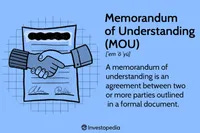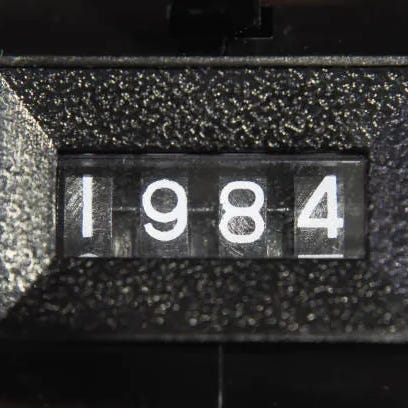09/12/2024
Inner Journey's Outlook - Business & Finance #005
NOTE - This article is part of the series: Venture Capitalism
Memorandum of Understanding
A Memorandum of Understanding (MOU) is a formal document outlining the terms and understanding between two or more parties, typically used to establish a framework for collaboration, partnership, or agreement. While not legally binding, an MOU signals the intention of the parties to move forward with a contract or agreement.
Key Components:
Parties Involved: Identification of the participating organizations, individuals, or governments.
Purpose: Clear statement of the agreement’s objectives and goals.
Roles and Responsibilities: Definition of each party’s duties and obligations.
Scope: Description of the agreement’s scope, including the subject matter, timeline, and geographic coverage.
Financial Arrangements: Details on funding, budgeting, and payment terms (if applicable).
Confidentiality and Intellectual Property: Clauses addressing confidentiality, data sharing, and intellectual property rights.
Termination: Conditions and procedures for terminating the agreement.
Dispute Resolution: Mechanisms for resolving disputes and conflicts.
Characteristics:
Non-Legally Binding: Unless explicitly stated, an MOU is not a legally enforceable contract.
Flexible: MOUs can be modified or updated as needed.
Informal: MOUs are often less formal than contracts, making them suitable for collaborations where a formal agreement is not necessary.
Guiding Document: An MOU serves as a roadmap for future agreements and collaborations.
Use Cases:
Business Partnerships: MOUs facilitate collaborations between companies, joint ventures, or research partnerships.
Government Agreements: MOUs are used in international agreements, interagency collaborations, and public-private partnerships.
Cross-Departmental Agreements: MOUs can streamline cloud services and procurement processes across government departments.
Best Practices:
Clearly Define Terms: Ensure all parties understand the agreement’s scope, roles, and responsibilities.
Include a Clause on Intent: Specify whether the MOU is intended to be legally binding or a statement of understanding.
Establish a Review Process: Regularly review and update the MOU as needed.
Involve Legal Counsel: Consult with legal experts to ensure the MOU meets the needs of all parties.
By understanding the definition, key components, and characteristics of a Memorandum of Understanding, you can effectively use this tool to establish collaborative agreements and partnerships.
***
See further article:
Memorandum of Understanding (MOU): Definition, Contents, Pros/Cons, vs. MOA
Source: https://www.investopedia.com/terms/m/mou.asp
By
Will Kenton is an expert on the economy and investing laws and regulations. He previously held senior editorial roles at Investopedia and Kapitall Wire and holds a MA in Economics from The New School for Social Research and Doctor of Philosophy in English literature from NYU.
Updated June 13, 2024
Reviewed by
Fact checked by
What Is a Memorandum of Understanding (MOU)?
A memorandum of understanding is an agreement between two or more parties outlined in a formal document. It is not necessarily legally binding, which depends on the signatories' intent and the language in the agreement, but signals the willingness of the parties to move forward with a contract.
The MOU can be seen as the starting point for negotiations as it defines the scope and purpose of the talks. Such memoranda are most often seen in international treaty negotiations but may also be used in high-stakes business dealings such as merger talks.
Key Takeaways
A memorandum of understanding (MOU) is a document that describes the broad outlines of an agreement that two or more parties have reached.
MOUs communicate the mutually accepted expectations of all of the parties involved in a negotiation.
While not necessarily legally binding, the MOU signals that a binding contract is imminent.
The MOU is most often found in international relations.
How a Memorandum of Understanding (MOU) Works
An MOU is an expression of agreement to proceed. It indicates that the parties have reached an understanding and are moving forward. Although it is not always legally binding, it is a serious declaration that a contract is imminent.
Under U.S. law, an MOU is similar to a letter of intent. In fact, arguably a memorandum of understanding, a memorandum of agreement, and a letter of intent are all similar documents. All communicate an agreement on a mutually beneficial goal and a desire to see it through to completion.
Note
Although an MOU is not necessarily legally binding, it allows parties to prepare for signing a contract by explaining the broad concepts and expectations of their agreement. Communicating in clear terms what each party hopes to gain from an agreement can be essential to the smooth execution of signing a legal contract in the future.
MOUs communicate the mutually accepted expectations of the people, organizations, or governments involved. They are most often used in international relations because, unlike treaties, they can be produced relatively quickly and in secret.
They are also used in many U.S. and state government agencies, particularly when major contracts are in the planning stages.
Contents of an MOU
An MOU clearly outlines specific points of understanding. It names the parties, describes the project on which they are agreeing, defines its scope, and details each party's roles and responsibilities.
While not always legally enforceable, an MOU is a significant step because of the time and effort involved in negotiating and drafting an effective document.
To create an MOU, the participating parties need to reach a mutual understanding. In the process, each side learns what is most important to the others before moving forward.
An MOU communicates the mutually accepted expectations of the people, organizations, or governments involved.
The process often begins with each party effectively drafting its own best-case MOU. It considers its ideal or preferred outcome, what it believes it has to offer to the other parties, and what points may be non-negotiable on its side. This is each party's starting position for negotiations.
Advantages and Disadvantages of an MOU
A memorandum of understanding allows all parties to clearly state all of their objectives and goals. This makes for less uncertainty and prevents future unexpected disputes from occurring.
Furthermore, by clearly laying out what each party expects of the other, an MOU provides a blueprint for any contract both parties may or may not wish to draw up in the future.
The biggest drawback of an MOU, depending on your point of view, is that it is not necessarily legally binding.
While in some cases this may be a benefit, since neither party is required to do what they say in the MOU, they can simply walk away or change their expectations. Of course, this all depends on the intent and legal language of the MOU.
MOUs can take significant time and planning to create and if one party completely changes its requirements, creating the MOU would be a large waste of resources.
Is an MOU Legally Binding?
A memorandum of understanding (MOU) is a legal document but it is not necessarily legally binding, although it usually signals a contract is imminent. The specific intent and language of the agreement will determine whether it is actually binding or not.
What Is the Difference Between an MOU and an MOA?
An MOU is a document that describes very broad concepts of mutual understanding, goals, and plans shared by the parties. In contrast, an MOA (memorandum of agreement) is a document describing in detail the specific responsibilities of, and actions to be taken by, each of the parties so that their goals may be accomplished.
How Do You Write an MOU?
Usually, a lawyer will draft an MOU. An MOU should clearly state the following: what parties are involved, the context of the agreement, the proposed date of when the agreement will become effective, the contact details of all relevant parties, the broad purpose of the agreement, and what each party is hoping to achieve, as well as a space for all necessary signatures.
Why Is an MOU Important?
An MOU is important because it allows each party to clearly state their objectives and what they expect from one another. Drafting an MOU can help solve any disputes before each party enters into a full, legally binding contract.
The Bottom Line
A memorandum of understanding (MOU) is a starting point of negotiations between multiple parties to signal the intent of doing business or coming to an agreement. It simplifies a legal contract by establishing the key objectives and goals.
***
NOTE - This article is part of the series: Venture Capitalism
***







